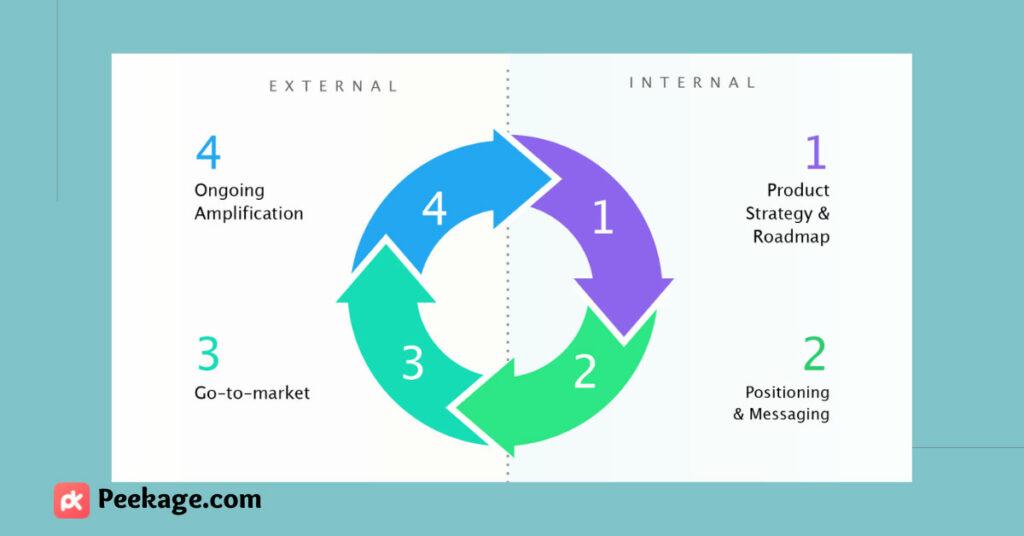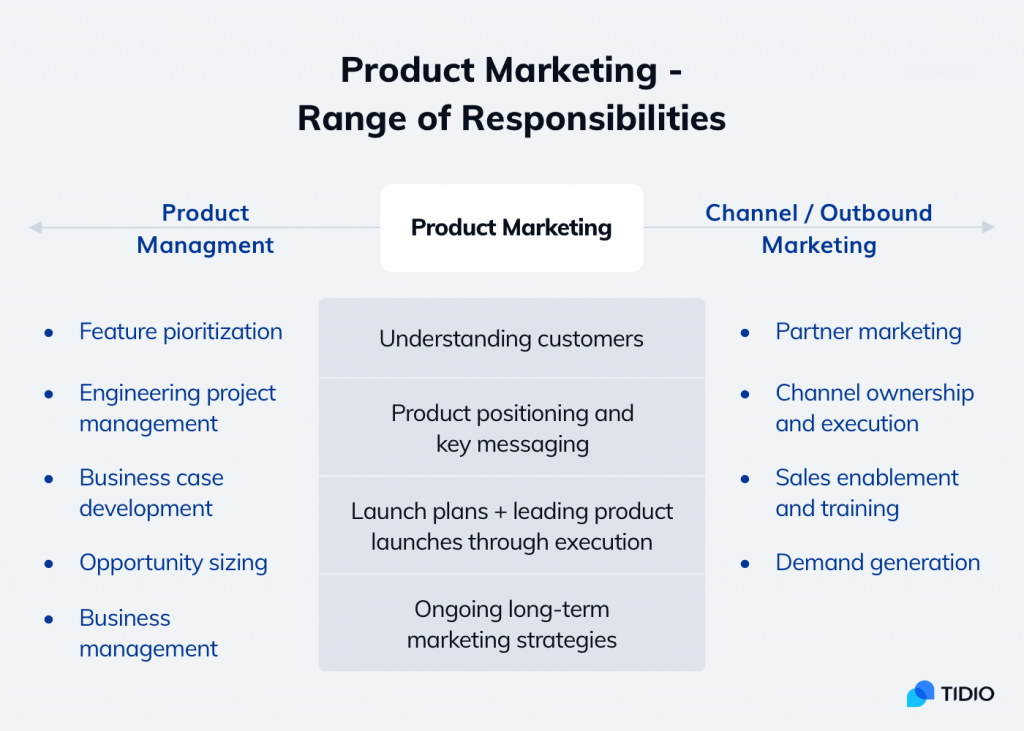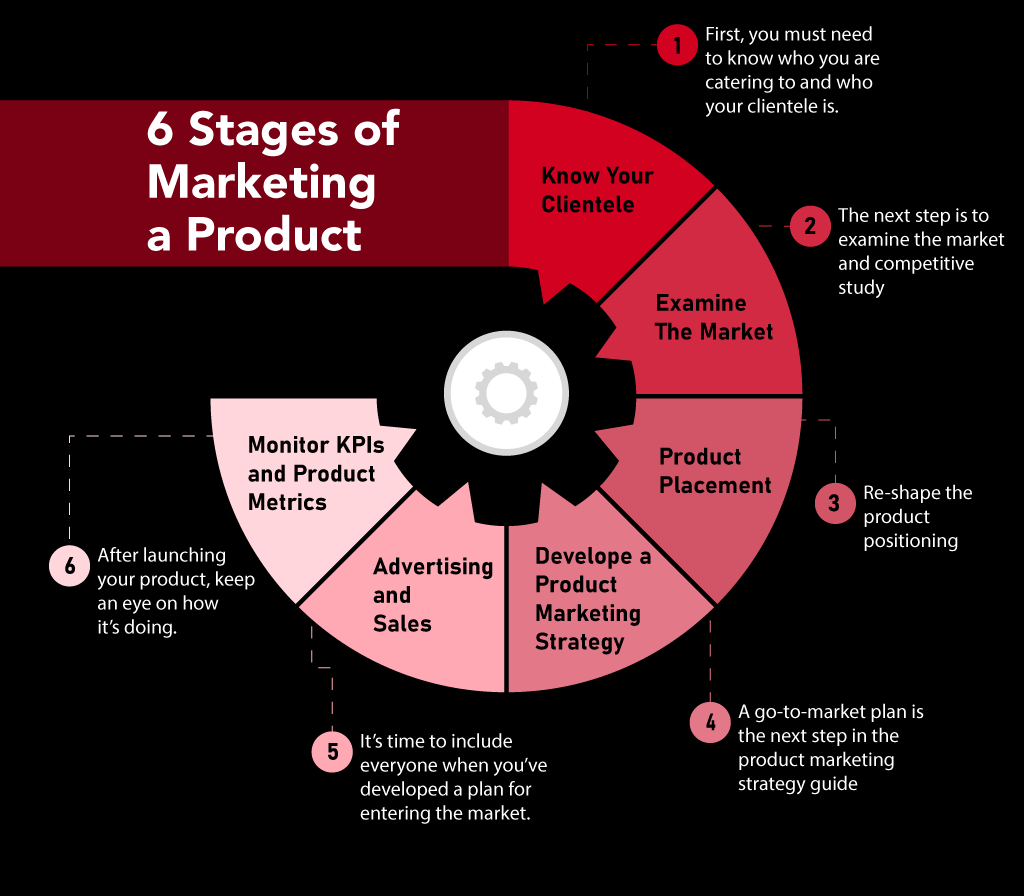Hey there! As you already know the title – you must agree with us on the fact that Companies devote significant resources to brand promotion (Mainly product marketing). Unfortunately, a product marketing strategy is often misunderstood in comparison to other types of marketing. In this piece, I’ll dispel those misconceptions and explain product marketing strategy tips and what product marketing entails.
A product strategy is different from a product marketing growth strategy. Likewise, marketing a product is different from selling or using digital marketing. Finally, managing a brand is a different function entirely from product marketing.
It is not like any other kind of marketing.
The target audience of a product is the target audience of the product. In addition, product marketing utilizes strategic product positioning to communicate with a specific audience across the customer experience, from eCommerce product sites to email marketing.
These operations overlap in product marketing, which helps promote products via a well-thought-out product marketing strategy. We’ll go into the specifics of a product marketing strategy guide shortly, but for now, let’s get down to business.
What is a Product Marketing Strategy?
While we still discuss – a product marketing growth strategy, let’s begin with product marketing strategy.
Just do one thing and search for “what is product marketing?” and check what answers you get. Well, the most basic answer you will get is “it’s the procedure of bringing a product to market,” which is accurate but incomplete.
This is because it promotes a simplistic and one-dimensional understanding of product marketing as merely the act of bringing a product to the market. However, product marketing also influences the development of a product by feeding back market feedback to its creators.

In reality, product marketing has two distinct phases: “before” and “after” a product introduction.
To put it another way, Product Marketing is the glue that holds the product and the market together.
An effective product marketing strategy will include your plans for introducing the product to the market and how you intend to achieve your desired return on investment.
It’s the key to figuring out where and how to connect with your most devoted followers.
Your marketing plan should reflect all stages of the product’s development and expansion. All the product managers, product marketing managers, marketers, and sales teams will need to work together to make this happen. It must be founded on solid buyer intelligence.
With the right product marketing growth strategy, your company will be seen by consumers as the most acceptable option for meeting their demands.
Is There a Need for Product Marketing Strategies, and Why Should Businesses Develop Them?
If not more so, a poorly executed product marketing strategy may be as detrimental to a company’s bottom line as a poorly designed product.
1. Penetrating new markets is facilitated by a practical marketing approach.
Although your product may be the greatest of its kind right now, tomorrow may be another story. Is your business capable of producing a product with a broad market appeal?
The product marketing strategy guide will help you create an effective product marketing plan for the impending expansion, paving the way for increased sales and company growth.
2. A solid marketing plan will reveal how to maximize sales of your goods.
The key to developing a successful product market strategy is learning which aspects of your product are most valued by your potential customers. The importance of this cannot be overstated, as it will help you create a successful product by addressing fundamental issues consumers face.
3. It lets you develop a unified message that will resonate with your customers.
Last but not least, it guarantees uniformity, a unique quality. Therefore, maintaining coherence in your advertising messaging is essential.
Companies that provide mixed messages to their audience are more likely to be ignored.
4. It facilitates interaction between your marketing team and the rest of the business.
Suppose your firm has a solid product marketing plan in place. In that case, it will be better to prevent blunders and miscommunication that may otherwise cost a lot of money. Unfortunately, a standard error made by some businesses is to see marketing in isolation when it should be regarded as an integral aspect of every department.

6 Stages of Product Marketing Strategy
Marketing a company’s products is essential to its overall marketing strategy. Without it, you won’t be able to reach as many people with your goods. So let’s examine the aims of product marketing to appreciate its significance.
1. First, you must need to know who you are catering to and who your clientele is.
Understanding your target market on a human level is ground zero in marketing.
Who are these individuals? For what purpose do they exist? The question is, how do they want it? The answers to these questions can aid you in gaining a deeper understanding of your users, allowing you to create more accurate personas and zero in on their most pressing issues.
2. The next step is to examine the market
Conducting a thorough and straightforward competitive study will provide a clear picture of the competition.
Can you name any of your rivals? Just what is it that they’re peddling? Are customers satisfied with them? How much space do you think there is for development? If you answer these questions, you’ll get insight into the character of the firms that produce items comparable to the ones you’re considering.
3. Re-shape the product positioning
Apply the knowledge you’ve acquired in 1 and 2 to crafting product messaging that will appeal to your target audience and win over your team with the new product marketing strategy.
Product placement, meanwhile, aids in standing out from the crowd and connecting with potential customers.

4. A go-to-market plan is the next step in the product marketing strategy guide
Use the measures above 1–3 to develop a strategy to help you successfully distribute your goods to the people. Traditional marketing departments must lend a hand with some aspects of bringing a product to market. This may be determined by looking at the go-to-market plan developed by product marketers.
The first step in developing a successful go-to-market strategy is to determine which personas will focus on each campaign and how those will reach those personas.
One or more campaigns tailored to each buyer profile may be part of a go-to-market plan.
5. Advertising and Sales
It’s time to include everyone when you’ve developed a plan for entering the market. Of course, this implies that everyone on the marketing and sales team has to be on the same page.
You should also provide your marketing and sales executives with everything they need to succeed, including content production, advertising, product sample, and any other channels recommended by your go-to-market plan in step 4.
6. After launching your product, keep an eye on how it’s doing.
Lead sales and marketing staff will know whether to continue with the current product and when to pivot to optimize launch effectiveness based on the product and customer feedback.
Monitoring the product’s performance is essential to ensure you reach the correct people with the most compelling message.
Monitor key performance indicators (KPIs) and product metrics to gauge success. Measure:
The penetration level of the market. Market penetration may be calculated by taking the total number of customers and dividing it by the size of the potential market, then multiplying the result by 100.
Calculating Your ROI (ROI).
ROI is a method for determining the profitability of investment by dividing the net income by the cost of the investment.
NPS = Net Promoter Score (NPS).
By conducting Net Promoter Score (NPS) surveys, you may determine how likely consumers are to buy and share your product with others. The Net Promoter Score (NPS) assigns your product a rating from 0 to 10. Dissatisfied customers grade you a zero to six. Passive clients are those who give you a score between seven and eight.
Promoter customers have a score of 10 or above. The Net Promoter Score (NPS) is determined by subtracting the number of promoters from the number of critics.
Always check your online and social media statistics to see whether you’re on track to achieve your goals. The use of social listening will allow you to monitor product mentions and related discussions.
Wrap Up
Adhering to these six measures will help you successfully sell your goods.
To be sure, keeping track of all your available resources is not easy. At the same time, you navigate the Product marketing process, which is notoriously complex due to the sheer volume of information it includes.
When marketing a product, it’s crucial to remember that success depends on anticipating and satisfying consumer wants over the whole product’s lifespan. This may be attained with the use of a product marketing strategy.
It’s essential to spend time in the planning phases gathering as much information as possible about your target market and customer base. Get the facts straight and then back up your product with a marketing strategy that makes it seem like the greatest option by doing thorough research.
Consistent and effective product and marketing goal execution relies on teams being on the same page and receiving regular updates. In addition, once your product is out in the market, it’s crucial to constantly monitor customer reactions, learn from them, and adjust your product marketing strategy accordingly.
Connect with Zupp Media to customize your digital marketing strategy for better ROI.
